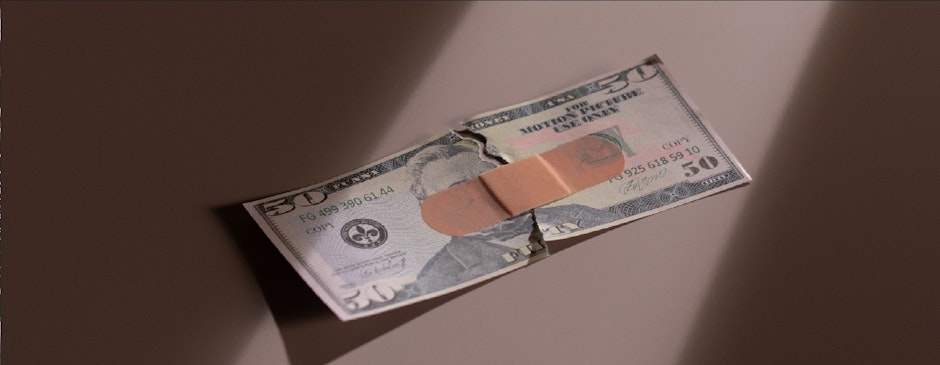How to stop losing profit to Amazon Vendor chargeback fees
Being penalised for not following the rules is something Amazon retailers need to be savvy about

Of course, the world’s largest online retailer has strict guidelines in place to protect its buyers’ rights. As a result, when you take to the platform to sell your products, you’ll need to stick to them.
If not, you can expect to receive some pretty hefty fines that can easily eat into your profit margins. And that’s not good for anyone. In fact, some retailers lose thousands of pounds in profits to unnecessary chargeback fees. Many businesses don’t realise, however, that you can not only dispute them, but you can also stop them from happening altogether.
Here, Optimizon’s Client Success Manager, Georgia Waller, discusses what Amazon vendor chargeback fees are, and (importantly) how to avoid them.
What are Amazon vendor chargeback fees?
When you sell products on Amazon, a transaction is made via the site, so when a buyer requests a chargeback for an issue, which they make via their bank, Amazon will know about it first.
The chargeback fee request could be for various reasons, including - but not limited to - things such as not receiving the right product, or being charged the wrong amount for shipping.
Amazon then investigates this complaint - and could incur an unexpected cost by spending time dealing with it. Subsequently, it passes these fees back on to sellers.
However, it’s worth triple-checking or even disputing the fee, as it could have been applied by mistake (and this happens surprisingly often).
How much are chargeback fees?
It’s an amount that’s not to be sniffed at.
If you’re a major player on Amazon, it wouldn’t be out of the ordinary to see chargeback fees of around £3,000 a month. That’s enough to pay for a full-time member of staff.
Of course, if you’ve got the time, for a £14 handling fee, you can dispute these fees with Amazon.
It’ll take a while though, and you’ll need to supply plenty of evidence to back up your side of the story. So, it might only be worth it if it’s going to save you a decent amount of cash.
How does Amazon tell me I've been issued a chargeback fee?
Amazon will send you a chargeback notification - that’s it.
When you see it, don’t dismiss it. All you need to do at this stage is confirm whether you accept it - or if you’ll be contesting it.
However, you don’t have long to make up your mind. The deadline for responding to a chargeback notification is only 11 days.
If you fail to respond within this timeframe, it defaults to being ‘accepted’ and the chargeback fee is deducted from your Amazon Pay account.
Is it worth disputing Amazon chargebacks?
Yes - if you’re receiving hefty chargeback fees, or if you’re prepared to put in the required effort, it’s worth disputing Amazon chargeback fees.
After all, there’s nothing good about seeing your profit margin slim down for errors you believe aren’t yours. If they are your errors, you need to identify where the problem is, and cut them out.
As an Amazon vendor, you’ll need to provide supporting documentation to prove your side of the story.
As a minimum, this includes proof the item was received by the cardholder, transaction status, and a description of the product or service.
You’ll then have to wait a nail-biting 90 days - or longer - for a decision to be made. And it’s the bank that gets the final say - not Amazon.
How can I keep on top of chargeback fees?
Try to avoid chargeback fees as much as possible. Keep strict records of all your transactions, sales and marketing, so that if they do start building up, and you want to appeal, it’s not an effort to dig out all your evidence.
You’ll really need to keep on top of them; don’t ignore them thinking they’ll go away on their own. Although to a certain extent they will, it’ll just cost you.
Firstly, it’s worth reading up on all the different types of chargeback fees. This way you can do your best to avoid making any silly mistakes that will end up costing you.
The best method for managing Amazon chargeback fees is to keep an eye out for chargeback notifications and the deadlines to respond or appeal to them.
You could take steps to improve your inventory and look to streamline the process of sending your products to Amazon. Perhaps, for instance, you might look at utilising the Amazon FBA service. It could make a huge impact.
Alternatively, you can ask for help! Enlist the assistance of a chargeback specialist who is able to conduct an account audit to assess your chargeback fees (yes, Optimizon can do this!). It’s ideal for bigger vendors who are facing thousands in costs.
Takeaways: How to manage chargeback fees
Read up on Amazon’s chargeback fees (and all the fine-print details too). As a result, you’ll be aware of what you can be charged for, and how to avoid it.
Keep on top of chargeback fee notifications. Remember, if you do want to appeal, you’ve only got 11 days to confirm it; or you’ll be charged anyway.
Streamline your inventory. Keep hold of all transaction details, and store them somewhere easily accessible. Doing this means the information is there when or if you need it.
Ask for help. If you’re a big Amazon vendor, a chargeback specialist could be the way forward. Optimizon can help with any issue you face relating to your Amazon activities. Please reach out to our team if you require any assistance.

